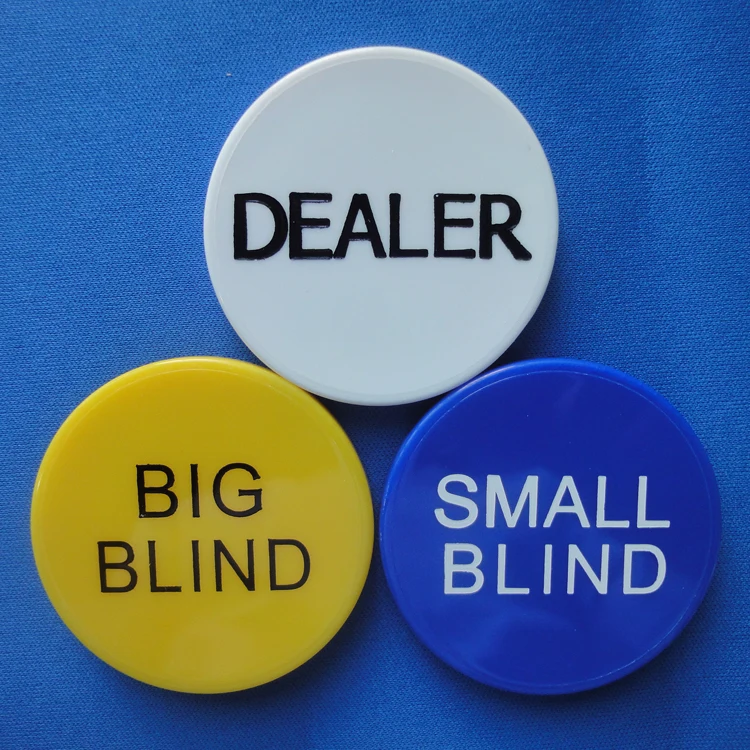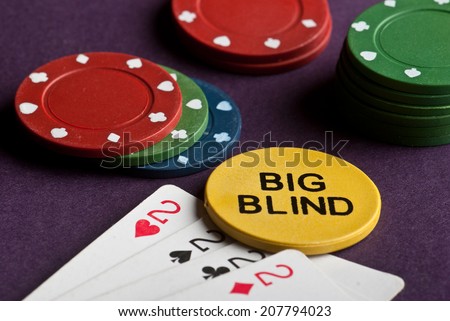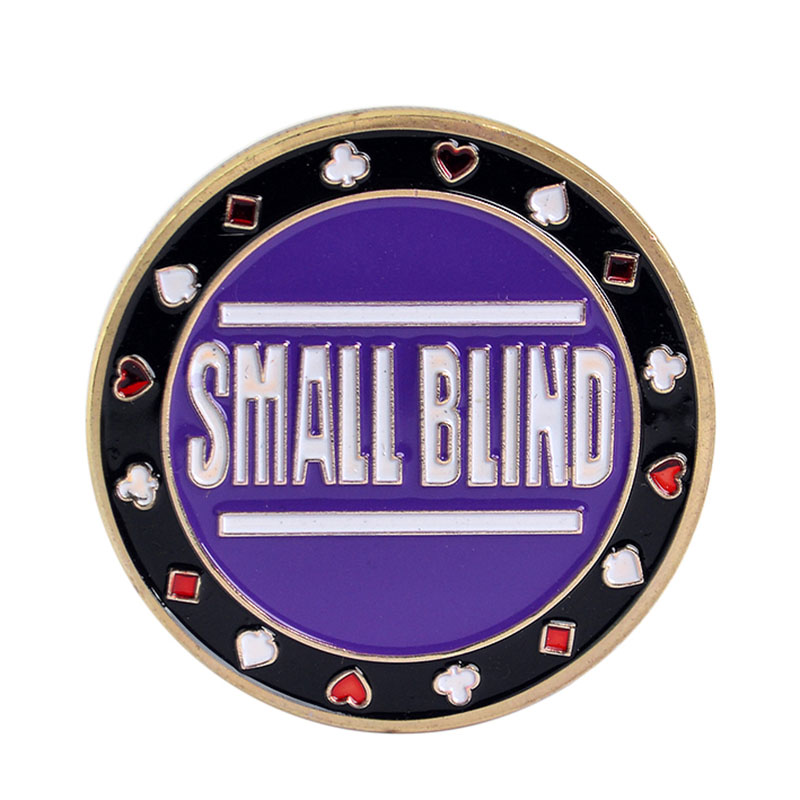Big Blind Small Blind Chips
- Big Blind Small Blind Chips Near Me
- Big Blind Small Blind Chips Covered
- Big Blind Little Blind Poker
- Little Blind Big Blind
In order to start betting in Hold’em, forced bets (known as blinds) are made by the two players immediately clockwise from the dealer button. The person immediately clockwise from the dealer has the small blind, and the next player clockwise has the big blind. Making blind bets is known as posting and this is done before any cards are dealt.

The size of the bets are determined by the limits of the game that you’re playing and the small blind is nearly always half of the big blind. So a $2/$4 Limit Hold’em game has a small blind of $1 and a big blind of $2.
A blind is a forced bet meant to ensure action in a game of poker. There are two blinds in each hand: the small blind and the big blind. This is known as the small blind. The player to his left will then place a full bet for that round. This player is called the big blind. Once the cards are dealt, the betting action starts with the player to the left of the big blind. He may either fold, call (by matching the big blind's initial bet) or raise (by increasing the big blind's bet).
Blinds are forced bets. The players in these positions must make these bets or they aren’t dealt cards in the hand. These blinds, in turn, force betting action on the table after everyone has been dealt their hole cards.
At a casino, when you first sit down at a Hold’em table, the rules vary as to whether you have to post blinds (even if you’re out of the normal blind positions for that hand) in order to be dealt a hand.
Nice and heavy 2 button combo. Very elegant antique gold finish. You will get 1 of each button. Small Blind 2 inch. Big Blind 2 inch. Each coin weighs approximately 40 grams. Perfect match with any of our fine poker chips set.
In Las Vegas, you’re dealt a hand as soon as you sit down and have shown that you meet the table’s minimum buy-in. You’re not required to post a blind in order to get hole cards. Conversely, in most California card rooms, you’re required to post a big blind in order to get your starting hand.
In cases where you’re required to post a big blind before you’re dealt cards, you’re mildly better off just waiting until it would normally be your turn to get the big blind anyway, rather than jumping straight into the hand. Waiting like this keeps you from making an extra forced bet and gives an added bonus of being able to case the players at the table while you aren’t actually playing. Dealers are used to this behavior and will probably ask you if you want to sit out (that is, wait until it’s your turn to post the big blind).
Regras Poker Big Blind Small Blind Valance

Big Blind Small Blind Chips Near Me
How soon you post is a fine point, though, that doesn’t really make that much difference. If you’re itchin’ to play, or if you have a very limited amount of time to play, go ahead and jump in. The dealer will tell you whether you’re required to post a big blind.
 Comments are closed.
Comments are closed.- I take you through a live demonstration of how most poker tables use small blinds and big blinds when betting.
- The threat of a big blind squeeze looms When we choose to flat rather than 3-bet from the small blind, our range is capped — it cannot contain the strongest hands. A good player in the big blind may realize this and squeeze a wide range, forcing us to fold our equity without seeing a flop. Or, the big blind may simply wake up with a very.

Big Blind Small Blind Chips Covered
Blind bets are used in Texas hold’em to get chips into the pot before the cards are dealt out. They are compulsory. Usually there are two blinds — the small blind and the big blind.
For example, in a $4-$8 game, the small blind (SB) is two $1 chips placed on the board by the player seated just to the left of the Button. And the big blind (BB) costs four $1 chips by the player just to the left of the SB. That serves to get the game started.
After the BB and SB post their respective blinds, the dealer starts by dealing two cards to each player, face-down — their hole cards. The first round of betting starts with the player to the left of the BB. After the Button acts, the SB must add two more chips to see the flop.
If there is a raise along the way, he must call the raise plus two more chips. Alternatively, he can raise the bet if he so chooses. In that case, each of the players still in the pot have the option to call the raise or re-raise. That includes the BB. The dealer will then deal three cards face-up — the flop.
Consider the situation when, before the flop, everyone has folded to the Button. At that point, he may raise it up. “Raise!” he announces aloud. In a $4-$8 limit game, he bets $8. The BB and SB then have three options: call the raise, re-raise, or muck their cards.
More often than not, they will both have been dealt weak or marginal starting hands; and so, will fold their hands, leaving the pot to the raiser. The Button’s raise then wins the pot — albeit a very small one. The dealer will rake one chip.

But do that often enough, and it adds up. Many players are wont to “steal the blinds” in this way. Even if one of the blinds has a reasonable starting hand, most often he will fold his cards, reasoning that the raiser probably has a much better hand than he, and his pot odds are poor.
Big Blind Little Blind Poker
In a somewhat similar situation, a skilled player in the Cut-Off position — just to the right of the Button — may make a raise before the Button. If the Button and both blinds muck their cards, the Cut-Off takes the pot. This ploy is best used when the Button is a tight player, and not loose — aggressive. It pays to know your opponents, especially those to your immediate left.
Little Blind Big Blind
Should the Button fold, but one of the two blinds elects to call the raise, the Cut-Off will have gained position, essentially becoming the virtual Button — last to act. Thus, the Cut-Off now can see how the blind plays his hand on the flop and on subsequent rounds of betting before he must act, without fear of being reraised.
That gives him a real edge — a significant advantage for the rest of the hand.
A skilled player in the Cut-Off position will glance to his left as he contemplates making a raise pre-flop to see if the Button or one if the Blinds is anxiously gathering chips to raise the bet.
That’s a great tell. Like “an ounce of prevention,” he then can muck his hole cards without having to invest a double bet or more. Note: The chips you save are more valuable than those you win. But, just in case one of them has a strong hand, it is best to have at least a marginal starting hand when making this raise.
Likewise, the skilled player may have previously observed that the Button is very aggressive, and prone to raise in such cases. Wisely, he will plan to change his seat when the opportunity arises, so that the aggressive player is to his right, and must act before he must decide if he wants to make that raise.